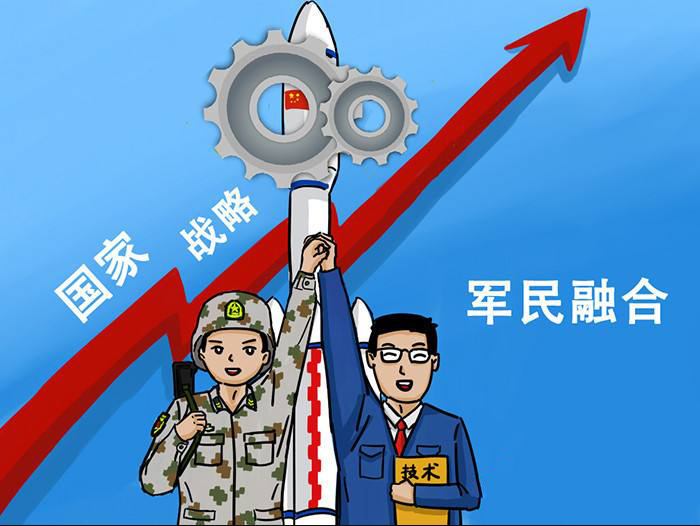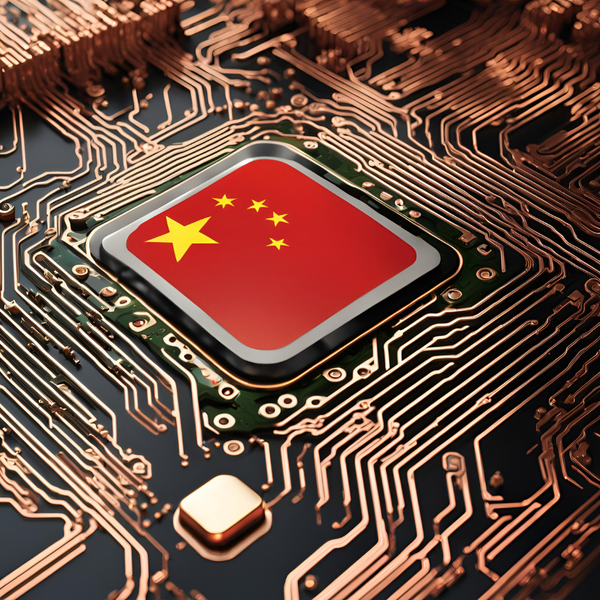China's Civil-Military Fusion: A Double-Edged Sickle

As tensions rise in the Asia-Pacific region, China's military is increasingly relying on civilian companies, state infrastructure, and logistics to support its operations. This approach, known as "civil-military fusion," (军民融合, jūnmín rónghé) aims to leverage China's vast economic resources to enhance its military capabilities. However, experts warn that this strategy also creates vulnerabilities that can be exploited by adversaries.
At the heart of China's civil-military fusion is the China State Shipbuilding Corporation (CSSC), one of the top 10 defence groups in China. The CSSC consists of various shipyards, equipment manufacturers, research institutes, and shipbuilding-related companies that build both civilian and military ships. One of its subsidiaries, the 704th Research Institute, made headlines in February 2024 when it deployed the autonomous ship "Zhu Hai Yun" on a course that appeared to challenge Taiwan and probe the environment around the island (1). The Zhu Hai Yun was described as a "drone carrier" and its deployment raised concerns about China's growing military capabilities (2).
Another key player in China's civil-military fusion is COSCO Shipping, a Chinese state-owned multinational conglomerate headquartered in Shanghai. The company's fleet is among the largest in the world, with over 1300 vessels, and it provides critical support to the PLA Navy's escort and non-combatant evacuation operations. COSCO's global network also enables the Navy to resolve logistics and supply issues outside China's immediate maritime periphery. In 2019, COSCO's container ship Fuzhou successfully resupplied the PLA Navy frigate Linyi, demonstrating the company's ability to support the Navy's operations (3). Additionally, COSCO's ferry subsidiary has been involved in amphibious landing exercises, including the use of a modified ferry to load and unload amphibious tanks in coastal waters.
China National Offshore Oil Corporation (CNOOC), the third-largest national oil company in China, is also playing a key role in China's civil-military fusion. The company focuses on the exploitation, exploration, and development of crude oil and natural gas in offshore China. However, its ties to the Chinese government and the PLA have raised concerns about its role in supporting China's military operations. In December 2020, the US Department of Defence named CNOOC as a company "owned or controlled" by the PLA and prohibited American investment in the company (4).
China's state infrastructure, including its high-speed rail network, is also being used to support military logistics. The China Railway Rolling Stock Corporation (CRRC), China's national champion in rail and emerging transportation systems, is a key player in this effort. CRRC's officials and corporate documents cite the military-civil fusion strategy, "Made in China 2025", and other central plans as the company's chief mandate. In addition, CRRC receives significant government backing, including subsidies, and collects data abroad through its globally proliferated sensors. The company shares data and technology with State and military affiliates through various platforms, including military-civil fusion zones and technology exchanges. CRRC's partnerships with companies like Huawei and BeiDou, a Chinese satellite navigation system, have raised concerns about individual and data security (5).
In February 2024, the European Union (EU) launched an investigation into CRRC for allegedly using state subsidies to undercut European suppliers. This move highlights the challenges faced by foreign companies competing with CRRC, which receives significant government backing.
China's civil-military fusion approach also involves the use of civilian airports and ports for military purposes. The PLA has designated specific airports and ports for military use, and civil airports can be quickly converted for military use in times of conflict. This approach raises concerns about the potential for civilian infrastructure to be used for military purposes, and the risk of civilian casualties in the event of a conflict. Our sources say that the PLA's command structure for civil-military fusion is complex, involving several key organisations and positions, including Military-Civilian Joint Command Centers (MROs), Theatre Joint Logistics Command Centers (TDDCs), and Joint Staff Logistics Department (JSLF).
Despite the potential benefits of civil-military fusion, experts warn that this strategy also creates significant vulnerabilities that can be exploited by adversaries. One of the main weaknesses of this approach is that it relies heavily on civilian companies and infrastructure, which can be easily disrupted or destroyed in times of conflict. For example, if a conflict were to break out in the Asia-Pacific region, China's reliance on civilian shipping companies like COSCO could be severely disrupted, potentially crippling the PLA's ability to resupply its troops and equipment.
Additionally, the use of civilian communication networks and infrastructure also increases the risk of cyber-attacks and espionage, which could compromise the PLA's command and control systems. Furthermore, the integration of civilian and military systems also raises concerns about the potential for civilian casualties in the event of conflict, as civilian infrastructure and personnel could be caught in the crossfire.
Ultimately, as tensions continue to rise in the Asia-Pacific region, China's civil-military fusion approach will likely play a critical role in any future conflict. However, it remains to be seen whether this strategy will prove to be a strength or a weakness for the PLA.
(1)Centre for International and Strategic Studies (CSIS): 'Skirting the Shores, China’s New High-Tech Research Ship Probes the Waters around Taiwan – 26 Feb 2024
(2)Newsweek: 'China’s High-Tech Ship Helps Military Prepare for War' – 28 Feb 2024
(3)Financial Times: 'Cosco: China’s shipping giant expands its global influence' – 12 May 2022
(4)Reuters: 'United States adds China’s SMIC and CNOOC to Defence blacklist' – 4 Dec 2020
(5)Financial Times: 'EU launches anti-subsidy probe into Chinese train maker' – 21 Feb 2024


